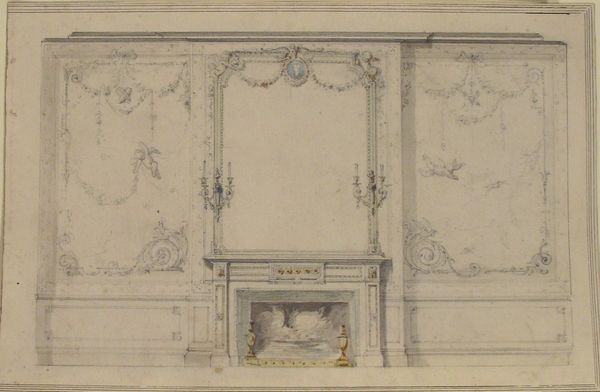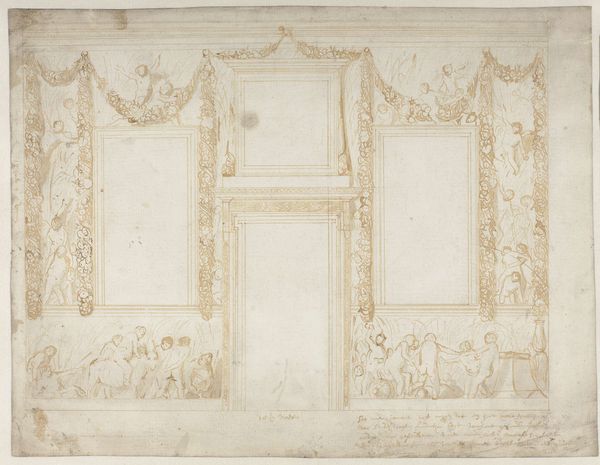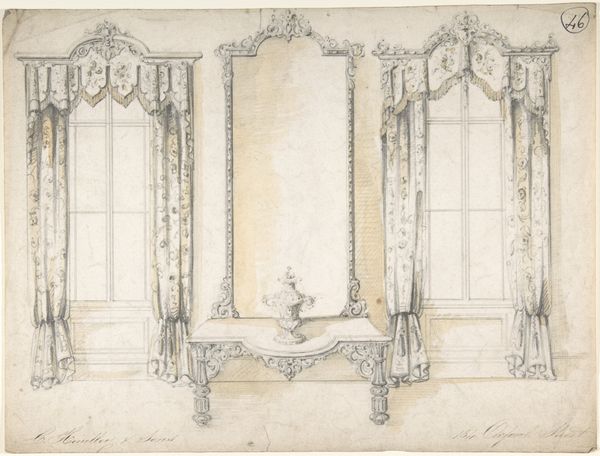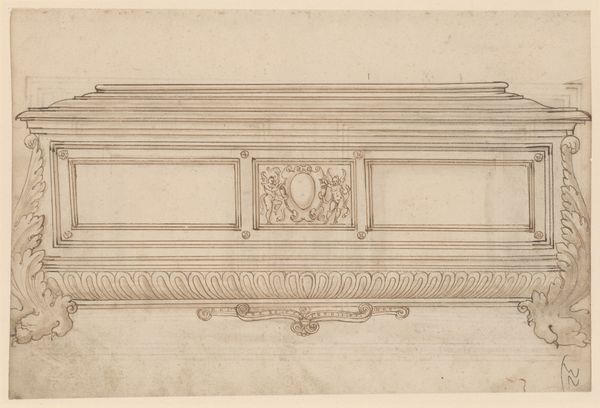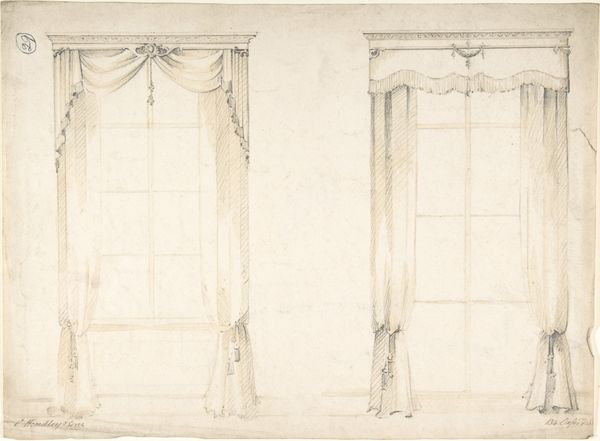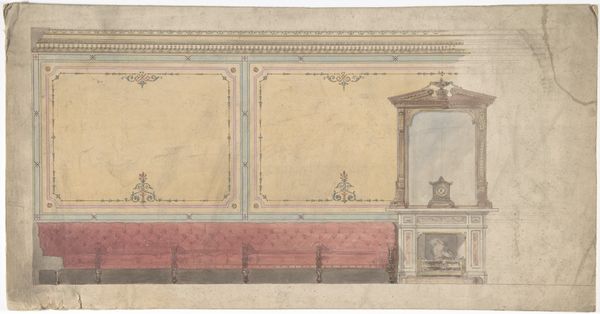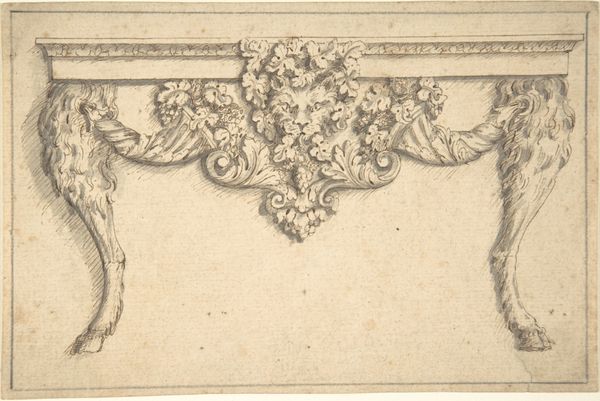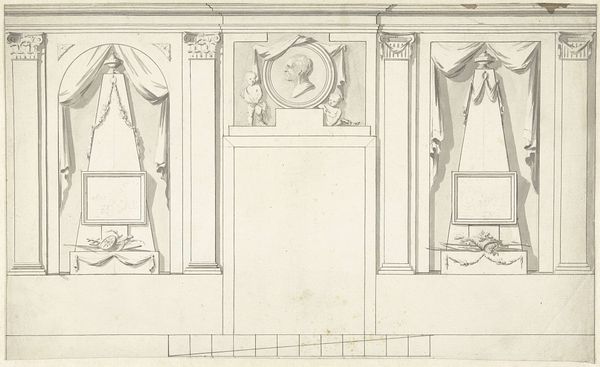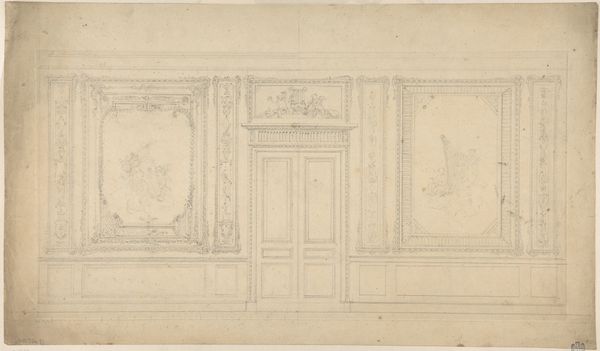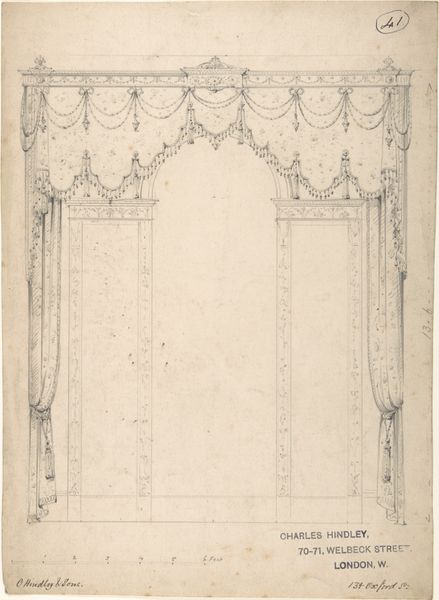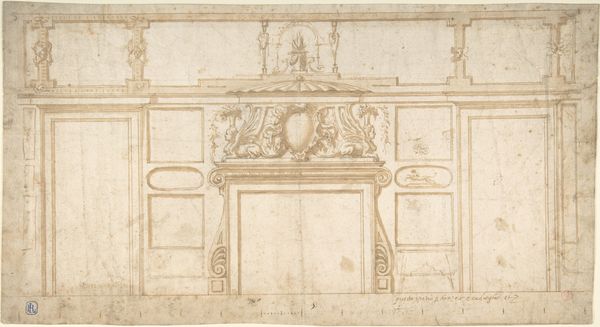
Design for Wall Treatment with Window and Door 19th century
0:00
0:00
drawing, print, paper, pencil
#
drawing
#
neoclacissism
# print
#
paper
#
form
#
geometric
#
pencil
#
line
Dimensions: 7 7/8 x 10in. (20 x 25.4cm)
Copyright: Public Domain
Charles Monblond drafted this wall treatment with window and door sometime in the 19th century. The draped curtains, a dominant motif here, immediately evoke a sense of theatricality and concealment. These curtains are not merely functional; they are heavy with symbolism. Consider how similar drapery appears in Renaissance paintings, often framing sacred or noble figures. These are a signifier of status, and also the revelation of truth and knowledge. This harks back to ancient rituals, where curtains separated the mundane from the divine. But here, the curtains seem to partly conceal and partly reveal, suggesting an interplay between the visible and the hidden, the known and the unknown. The psyche, much like a stage, uses symbolic gestures. The motif of drapery has a cyclical progression, constantly resurfacing and evolving in different contexts. In Monblond's design, the curtain exists as a marker of domestic, social, and personal significance. It is a powerful force, engaging viewers on a subconscious level and reminding us of the ever-evolving language of symbols.
Comments
No comments
Be the first to comment and join the conversation on the ultimate creative platform.
